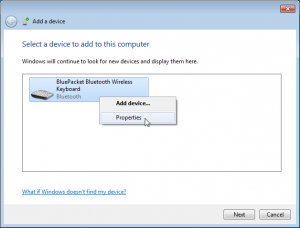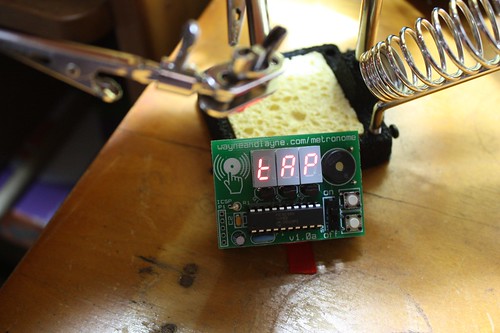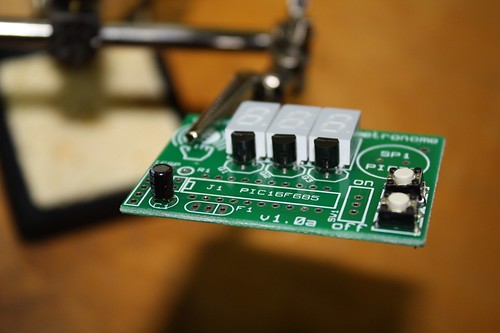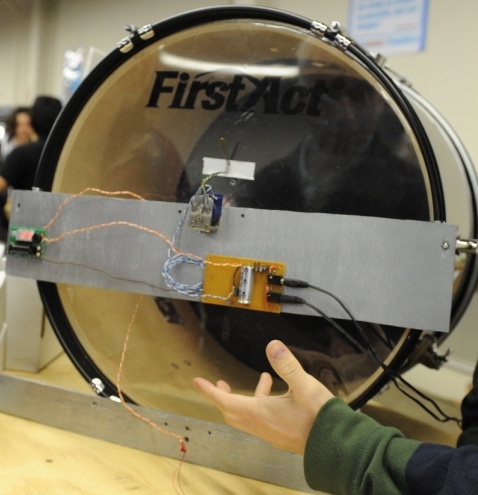Weekly Link Dump for 2010-06-25
- Knight’s tour

The Knight’s Tour is a mathematical problem involving a knight on a chessboard. The knight is placed on the empty board and, moving according to the rules of chess, must visit each square exactly once. A knight’s tour is called a closed tour if the knight ends on a square attacking the square from which it began (so that it may tour the board again immediately with the same path). Otherwise the tour is open. The exact number of open tours is still unknown. Creating a program to solve the knight’s tour is a common problem given to computer science students. - Chicken hypnotism
A chicken can be hypnotized, or put into a trance, by holding its head down against the ground, and continuously drawing a line along the ground with a stick or a finger, starting at its beak and extending straight outward in front of the chicken. If the chicken is hypnotized in this manner, it will remain immobile for somewhere between 15 seconds and 30 minutes, continuing to stare at the line. - Blue Hole

A blue hole is a submarine cave or sinkhole. They are also called vertical caves. Blue holes are roughly circular, steep-walled depressions, and so named for the dramatic contrast between the dark blue, deep waters of their depths and the lighter blue of the shallows around them. The deepest blue hole in the world—at 202 metres (663 ft)—is Dean’s Blue Hole, located in a bay west of Clarence Town on Long Island, Bahamas. - Super Outbreak
The Super Outbreak is the largest tornado outbreak on record for a single 24-hour period. From April 3 to April 4, 1974, there were 148 tornadoes confirmed in 13 US states, including Illinois, Indiana, Michigan, Ohio, Kentucky, Tennessee, Alabama, Mississippi, Georgia, North Carolina, Virginia, West Virginia, and New York; and the Canadian province of Ontario. It extensively damaged approximately 900 square miles along a total combined path length of 2,600 miles. It remains the most outstanding severe convective weather episode of record in the continental United States. The outbreak far surpassed previous and succeeding events in severity, longevity and extent. - Derecho

A derecho (from Spanish: “derecho” meaning “straight”) is a widespread and long-lived, violent convectively induced straight-line windstorm that is associated with a fast-moving band of severe thunderstorms in the form of a squall line usually taking the form of a bow echo. Derechos blow in the direction of movement of their associated storms, similar to a gust front, except that the wind is sustained and generally increases in strength behind the “gust” front. A warm weather phenomenon, derechos occur mostly in summer, especially June and July in the Northern Hemisphere. They can occur at any time of the year and occur as frequently at night as in the daylight hours.
Weekly Link Dump for 2010-06-18
- Old Abe

A female bald eagle who was the mascot of the 8th Wisconsin Volunteer Infantry Regiment in the American Civil War, the screaming eagle mascot of the Army’s 101st Airborne Division, and the mascot of the high school I attended. - Silly Season
The period of time lasting for a few months in mid to late summer typified by the emergence of frivolous news stories in the media, driven by legislative recess, holiday vacations, and a general lack of newsworthy events. Newspapers would print attention-grabbing headlines and articles to keep interest, often of a “moral panic” or sensationalist nature. - Doppler On Wheels
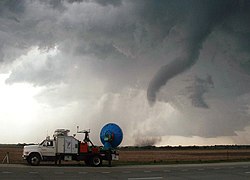
The DOW are a fleet of radar trucks maintained by the Center for Severe Weather Research, funded by the National Science Foundation. Vehicles have a Doppler weather radar dish, and are used to observe tornadoes and hurricanes at close distance, playing an important role in several recent discoveries. - Comics Code Authority
The CCA is part of the Comics Magazine Association of America, created to regulate the content of comic books in the US. Member publishers submit comic books to the CCA, which screens them for conformance to its Comics Code, and authorizes the use of their seal on the cover if the books comply. At the height of its influence, it was a de facto censor for the U.S. comic book industry. - Ultramarine

A blue pigment consisting primarily of a double silicate of aluminum and sodium with some sulfides or sulfates, and occurring in nature as a proximate component of lapis lazuli. Natural ultramarine is the most difficult pigment to grind by hand, and for all except the highest quality of mineral sheer, grinding and washing produces only a pale grayish blue powder. A new process was developed, which consisted of mixing the ground material with melted wax, resins, and oils, wrapping the resulting mass in a cloth, and then kneading it in a dilute lye solution. The blue particles collect at the bottom of the pot, while the impurities and colorless crystals remain in the mass. The pigment was most extensively used during the 14th through 15th centuries, as its brilliance complemented the vermilion and gold of illuminated manuscripts and Italian panel paintings.
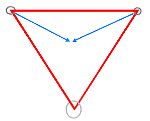
Also known as the “American Triangle”, “Death Triangle” or “Triangle Anchor”, it is a type of rock climbing anchor infamous for being a poor anchoring technique due to both the way the forces of the load are magnified on the fixed anchors and the lack of redundancy in the cord.
We’re coming to Make: Day!
The Science Museum of Minnesota is hosting a Make: event again this year. It’s family-friendly and “features arts, electronics, musical performances, green technology, crafting and more!”
It’s from noon to 5 PM on Sunday, June 20th, 2010. This is Father’s Day in the US, so dads get in free! Admission includes access to all the regular exhibit galleries.
We’re bringing the Tactile Metronome-on-a-Drum that we debuted at Maker Faire 2010. We’re also going to bring some handheld Arduino gadgets and toys.
The Science Museum of Minnesota has this to say about Wayne and Layne:
“Described as a “Metronome with an attitude,” the Tactile Metronome is a tap-controlled device that allows users to customize their own beat patterns by tapping them out and then adjusting the speed. The metronome will be hooked up to a drum so you’ll be able to hear your own unique rhythms in action. Wayne and Layne, LLC designs open source hardware kits that invite customers to try out their own modifications. The company was founded by Adam Wolf and Matthew Beckler, two computer engineering graduates of the University of Minnesota.”
This post explains how to connect a Bluetooth keyboard to your Linux/Mac/Windows computer without having to enter a pairing code. This is useful if you have a broken key on your keyboard, if you want to automate the pairing from a script, or you are building a custom keyboard that doesn’t have all the number keys connected (that’s me!).
Linux
 Based on the Ubuntu Community Documentation for Bluetooth Setup, these commands were tested on Ubuntu Lucid Lynx 10.4, but should work on other version of Linux provided you can figure out how to install the necessary Bluetooth utilities.
Based on the Ubuntu Community Documentation for Bluetooth Setup, these commands were tested on Ubuntu Lucid Lynx 10.4, but should work on other version of Linux provided you can figure out how to install the necessary Bluetooth utilities.
First, we need to scan the available devices. Make sure your keyboard is in discoverable mode (push the button) before running the scan command.
matthew@broderick:~$ hcitool scan
Scanning ...
00:12:A1:63:34:6EÂ Â Â BluePacket Bluetooth Wireless Keyboard
This provides us with the device ID, similar to the MAC address of a network card. Copy this code to the clipboard for the next command. We need the hidd command, which is part of the bluez-compat package. On Ubuntu, you can install it with this command:
matthew@broderick:~$ sudo apt-get install bluez-compat
Next, we need to manually connect to the keyboard device ID:
matthew@broderick:~$ sudo hidd --connect 00:12:A1:63:34:6E
After this command finishes, your keyboard should be working with Linux. Try typing characters into vim or gedit, to make sure it’s working properly. Congratulations!
Windows 7
 This solution was found at one of the Microsoft support forums. I know, I had no idea that Microsoft had support forums, either. Even more surprisingly, I was able to obtain useful information from a Microsoft webpage. To start, open up the Control Panel, and go to “Hardware and Sound”. Select “Add a Bluetooth device”:
This solution was found at one of the Microsoft support forums. I know, I had no idea that Microsoft had support forums, either. Even more surprisingly, I was able to obtain useful information from a Microsoft webpage. To start, open up the Control Panel, and go to “Hardware and Sound”. Select “Add a Bluetooth device”:
 When Windows is searching for your Bluetooth devices, put your keyboard into pairing mode (press the button). When it shows up in the list, don’t double click it! Instead, right-click on the keyboard device and select “Properties”:
When Windows is searching for your Bluetooth devices, put your keyboard into pairing mode (press the button). When it shows up in the list, don’t double click it! Instead, right-click on the keyboard device and select “Properties”:
In the window that opens, “Keyboard Properties”, wait a couple seconds for the services panel to load. Once it has loaded, check the box for “Drivers for keyboard, mice, etc. (HID)”. Click on “OK” to close the window.
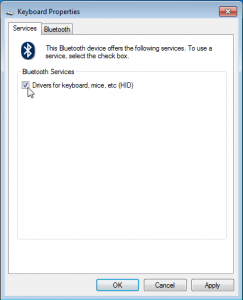 Windows will load the drivers for your keyboard. After everything settles down, your keyboard should be working with Windows. Try typing characters into Notepad, to make sure it’s working properly. Congratulations!
Windows will load the drivers for your keyboard. After everything settles down, your keyboard should be working with Windows. Try typing characters into Notepad, to make sure it’s working properly. Congratulations!
Mac OSX
 Despite a couple hours of searching the web and trying all possible menu options, I was unable to figure out how to pair a bluetooth keyboard without having to type in a randomly-generated numeric passcode. If you know how to do get around this, please leave a comment below. Thanks!
Despite a couple hours of searching the web and trying all possible menu options, I was unable to figure out how to pair a bluetooth keyboard without having to type in a randomly-generated numeric passcode. If you know how to do get around this, please leave a comment below. Thanks!
Weekly Link Dump for 2010-06-11
- American Death Triangle

Also known as the “American Triangle”, “Death Triangle” or “Triangle Anchor”, it is a type of rock climbing anchor infamous for being a poor anchoring technique due to both the way the forces of the load are magnified on the fixed anchors and the lack of redundancy in the cord. - Pogo oscillation
A potentially dangerous type of self-excited oscillation caused by combustion instability in liquid fuel rocket engines. This oscillation results in variations of thrust from the engines, generally caused by variations in fuel flow rate, and placing stress on the frame of the vehicle. - Hyperboloid structures

These are architectural structures designed with hyperboloid geometry. Often these are tall structures such as towers where the hyperboloid geometry’s structural strength is used to support an object high off the ground, but hyperboloid geometry is also often used for decorative effect as well as structural economy. The first hyperboloid structures were built by Russian engineer Vladimir Shukhov (1853–1939). The world’s first hyperboloid tower is located in Polibino, Lipetsk Oblast, Russia. The shapes are doubly ruled surfaces (hence can be built with a lattice of straight beams). - The Mother of All Demos
A name given retrospectively to Douglas Engelbart’s December 9, 1968 demonstration at the Fall Joint Computer Conference (FJCC) at the Convention Center in San Francisco, in which a number of experimental technologies that have since become commonplace were presented. The demo featured the first computer mouse the public had ever seen, as well as introducing interactive text, video conferencing, teleconferencing, email, hypertext and a collaborative real-time editor. - Paella

Aa Valencian rice dish that originated in its modern form in the mid-19th century near lake Albufera, a lagoon in Valencia, on the east coast of Spain. It consists of white rice, green vegetables, meat (rabbit, chicken, duck), snails, beans and seasoning, although sometimes seafood replaces the meat.
Images:
American Death Triangle, from Wikipedia
Adziogol hyperboloid Lighthouse by Vladimir Shukhov 1911, from Wikipedia
Paella de marisco 01, from Wikipedia
Weekly Link Dump for 2010-06-04
- Washburn Park Water Tower
The Washburn Park Water Tower poses as a landmark of early 20th-Century architectural achievement within the Tangletown neighborhood in south Minneapolis, Minnesota, and has been doing so for nearly 75 years. Perched on top of one of the highest points in south Minneapolis, the tower is given the privilege to boast its unique location and role as an unofficial “beacon” for incoming planes landing at Minneapolis-Saint Paul International Airport, yet remains hidden from much of the residents and visitors that pass by the base of the hill each day. - Louisville Sewer Explosions
The Louisville sewer explosions were a series of explosions that destroyed more than two miles (3 km) of streets in Louisville, Kentucky, United States on February 13, 1981. The blasts were caused by the ignition of hexane vapors which had been illegally discharged from a Ralston-Purina soybean processing plant located near the University of Louisville. - Battle of the Beams
The Battle of the Beams was a period early in the Second World War when bombers of the German Air Force (Luftwaffe) used a number of increasingly accurate systems of radio navigation for night bombing. British “scientific intelligence” at the Air Ministry fought back with a variety of increasingly effective means, involving jamming and distortion of the radio waves. The period ended when the Germans moved their bomber forces to the East in May 1941, in preparation for the attack on the Soviet Union. - Halt and Catch Fire
Halt and Catch Fire, known by the mnemonic HCF, was originally a fictitious computer machine code instruction claimed to be under development at IBM for use in their System/360 computers, along with many other amusing instructions such as “Execute Operator”. One apocryphal story goes back to the late 1960s, when computers used magnetic core memory. The story goes that in order to speed up the core memory on their next model the engineers increased the read/write currents in the very fine wires that were threaded through the cores. This worked fine when the computer was executing normal programs, since memory accesses were spread throughout memory. However, the HALT instruction was implemented as a “Jump to self”. This meant that the same core memory location was repeatedly accessed, and the very fine wires became so hot that they started to smoke – hence “Halt and Catch Fire”. - Glacial Lake Outburst Flood

A glacial lake outburst flood can occur when a lake contained by a glacier or a terminal moraine dam fails. This can happen due to erosion, a buildup of water pressure, an avalanche of rock or heavy snow, an earthquake, volcanic eruptions under the ice, or if a large enough portion of a glacier breaks off and massively displaces the waters in a glacial lake at its base.
Images:
Washburn Water Tower, a Public Domain image from Wikimedia Commons
Hubbard Glacier May 20.2000, a Public Domain image from Wikimedia Commons
At the recent Maker Faire, we got a couple questions from people asking if the metronome buzzed or vibrated. While that’s not part of the standard kit, we decided to try it out, by adding a vibration motor:
We used a very similar technique as for the drum solenoid interface, but the vibration motor didn’t require a transistor, and could be driven directly from the microcontroller.
 With this circuit, we connect the driving pulse output pin through a 30 ohm resistor to the positive terminal of the motor. The negative terminal of the motor is connected to ground. Just like the solenoid, a motor is a coil of wire, which can create dangerous inductive kickback when we turn off the output pin. To protect our circuitry from this kickback, we added a protection diode just like with the solenoid circuit.
With this circuit, we connect the driving pulse output pin through a 30 ohm resistor to the positive terminal of the motor. The negative terminal of the motor is connected to ground. Just like the solenoid, a motor is a coil of wire, which can create dangerous inductive kickback when we turn off the output pin. To protect our circuitry from this kickback, we added a protection diode just like with the solenoid circuit.
In the firmware code for the microcontroller, we had to make each output pulse last a bit longer, since the vibration motor needs a longer pulse to get up to full speed. We found that pulse lengths longer than 100 ms worked well. Perhaps we could use shorter pulses if we added a transistor instead of driving the motor directly.
The circuit above was inspired by the most excellent LilyPad Vibe Board.
We met Ben Rosenberg at the 2010 Maker Faire when he stopped by our table in the Maker Shed. He purchased a Tap-Tempo Metronome and put it together, taking some great pictures in the process. We’ve included a couple of his pictures here, but he’s got all the photos at Flickr, so go check them out!
Have you assembled your metronome? Did you throw a killer dance party with tempo controlled lighting? Built a tap-tempo dancing killer robot? Why don’t you take a picture of your handiwork and send it in. Post your photos to the web and send us a link!
If you stopped by our table at the Maker Faire, you got to play around with our big drum demo of the Tap-Tempo Metronome. Lots of people had questions about how we drove the solenoid for the drum striker, so we decided to write it up once we got back home.
We added an external piezoelectric element to set on the bench top, making it easier for kids to reach. We simply soldered this external piezo element to the same pads as the Tap-Tempo Metronome’s built-in piezo element. Here’s the large piezo we used.
For the drum striker, we used an electromagnetic solenoid, which consists of a coil of wire wound around a movable metal core. When current is sent through the coil, the metal core moves a short distance. Unfortunately, the pins on a microcontroller are relatively weak, meaning that they can only supply 20-40 milliamps (mA) of current, compared to the 1 amp draw of our solenoid. This means that we can’t directly connect the microcontroller to the solenoid, as not enough current would be supplied. The usual solution to this drive strength problem is to use a transistor as a switch.
Make Magazine Interview
Wayne and Layne were recently interviewed by John Park of Make: Online for their “Maker Business” series!


Matthew Beckler and Adam Wolf of Wayne and Layne at Maker Faire, with their Tactile Metronome kit.
Maker businesses are all about the people, and these guys are two of my favorites. Adam and Matt of Wayne and Layne rock. They are incredibly bright engineers and hilarious dudes whom I think should have their own podcast in order to crack us up year round.
Tell us about yourselves: how did you get started building things? Any memorable maker moments from your childhoods?
We’ve been friends since middle school. Sometime in that timeframe we bought a Basic Stamp 2 in parts form, and had Adam’s dad solder it up. We didn’t do much with it, but we had a relay and some LEDs and some buttons on a breadboard. I can’t even imagine what we could have accomplished if we would have had access to the community that’s available online now.
Read the rest of the interview: Maker Business: Wayne and Layne




